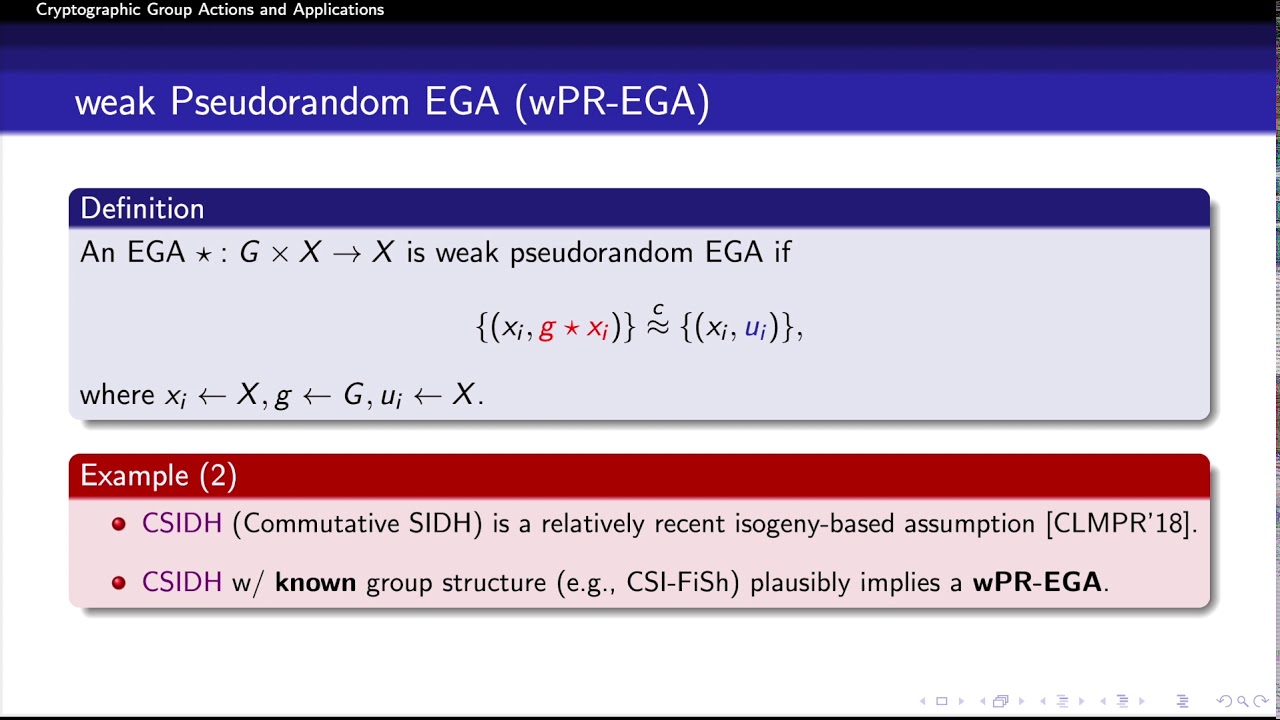Welcome to the resource topic for 2020/1188
Title:
Cryptographic Group Actions and Applications
Authors: Navid Alamati, Luca De Feo, Hart Montgomery, Sikhar Patranabis
Abstract:Isogeny-based assumptions have emerged as a viable option for quantum-secure cryptography. Recent works have shown how to build efficient (public-key) primitives from isogeny-based assumptions such as CSIDH and CSI-FiSh. However, in its present form, the landscape of isogenies does not seem very amenable to realizing new cryptographic applications. Isogeny-based assumptions often have unique efficiency and security properties, which makes building new cryptographic applications from them a potentially tedious and time-consuming task. In this work, we propose a new framework based on group actions that enables the easy usage of a variety of isogeny-based assumptions. Our framework generalizes the works of Brassard and Yung (Crypto’90) and Couveignes (Eprint’06). We provide new definitions for group actions endowed with natural hardness assumptions that model isogeny-based constructions amenable to group actions such as CSIDH and CSI-FiSh. We demonstrate the utility of our new framework by leveraging it to construct several primitives that were not previously known from isogeny-based assumptions. These include smooth projective hashing, dual-mode PKE, two-message statistically sender-private OT, and Naor-Reingold style PRF. These primitives are useful building blocks for a wide range of cryptographic applications. We introduce a new assumption over group actions called Linear Hidden Shift (LHS) assumption. We then present some discussions on the security of the LHS assumption and we show that it implies symmetric KDM-secure encryption, which in turn enables many other primitives that were not previously known from isogeny-based assumptions.
ePrint: https://eprint.iacr.org/2020/1188
Talk: https://www.youtube.com/watch?v=Pjwtk782FVk
See all topics related to this paper.
Feel free to post resources that are related to this paper below.
Example resources include: implementations, explanation materials, talks, slides, links to previous discussions on other websites.
For more information, see the rules for Resource Topics .
